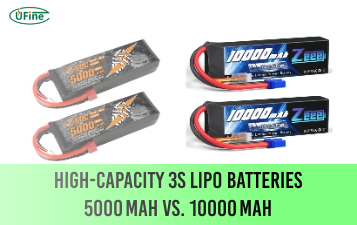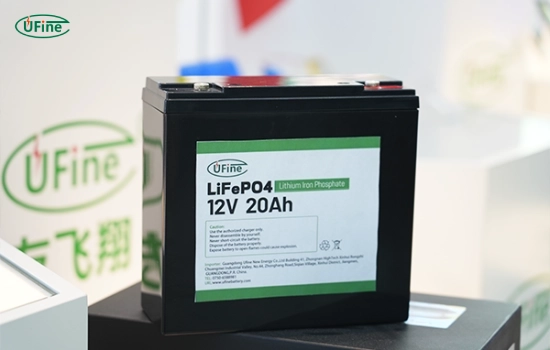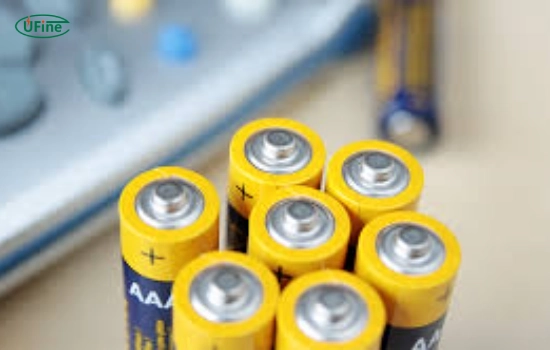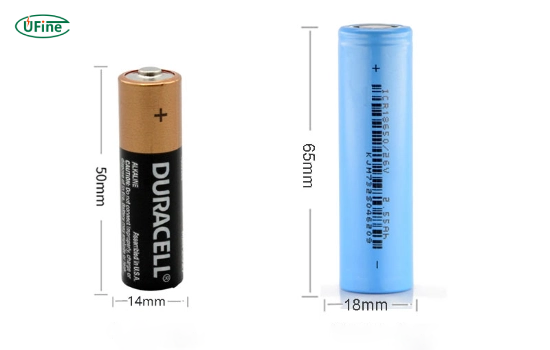In today’s technology-driven world, batteries are essential components that power many devices, from smartphones to electric vehicles. When choosing the correct battery, understanding the differences between high-capacity and standard batteries is crucial. This article will delve into the characteristics, advantages, applications, and maintenance tips for both types of batteries. By the end, you’ll better understand which battery best suits your needs.
Part 1. What is a high capacity battery?
High-capacity batteries are engineered to store and deliver significantly more energy than standard batteries. They are often utilized in applications with critical extended power availability, such as electric vehicles (EVs), renewable energy systems, and high-performance electronics. These batteries can typically endure more charge/discharge cycles, making them a preferred choice for demanding applications.
Key Features of High Capacity Batteries:
- Energy Density: They possess higher energy density, allowing them to store more energy in a smaller volume.
- Longevity: These batteries can last between 2000 to 4000 cycles, depending on usage and maintenance.
- Lower Self-Discharge Rate: High-capacity batteries retain their charge longer when not used, which is advantageous for devices used intermittently.
Common Types and Models of High Capacity Batteries:
- Lithium-Ion (Li-ion): Widely used in smartphones, laptops, and electric vehicles. Models include the 18650 and 21700 cells.
- Lithium Polymer (LiPo): Often found in drones and RC vehicles due to their lightweight and flexible form factor.
- Nickel-Metal Hydride (NiMH): Used in hybrid vehicles and rechargeable household batteries. Standard models include AA and AAA sizes.
Part 2. What is a standard battery?
Standard batteries, commonly found in everyday devices, are designed for general use. They typically have lower energy storage capabilities than high-capacity batteries but excel in affordability and availability. People often use standard batteries in household items like remote controls, flashlights, and toys.
Characteristics of Standard Batteries:
- Cost-Effective: Generally cheaper to produce and replace than high-capacity batteries.
- Widespread Availability: Easily found in stores and supermarkets.
- Lightweight: Typically easier to handle and transport for everyday applications.
Common Types and Models of Standard Batteries:
- Alkaline Batteries are widely used in household devices; standard sizes include AA, AAA, C, and D.
- Nickel-Cadmium (NiCd): Often used in power tools and rechargeable devices.
- Lead-Acid Batteries: People commonly use these in automotive applications and uninterruptible power supplies (UPS).
Part 3. Key differences between high capacity and standard batteries
Understanding the differences between high-capacity and standard batteries is essential for making informed choices about energy storage solutions.
Engineers design high-capacity batteries for applications that require significant energy over an extended period. They are ideal for devices that demand high performance and longevity. In contrast, standard batteries suit everyday devices with lower energy requirements.
Comparison of Key Attributes:
|
Feature |
High Capacity Batteries |
Standard Batteries |
|
Energy Density |
Higher energy storage |
Lower energy storage |
|
Lifespan |
2000 – 4000 cycles |
Fewer cycles, often less than 1000 |
|
Self-Discharge Rate |
Lower self-discharge rate |
Higher self-discharge rate |
|
Cost |
More expensive |
Generally cheaper |
|
Applications |
EVs, renewable energy, high-demand devices |
Household electronics, toys, essential lighting |
Part 4. Advantages of high capacity and standard batteries
Both high-capacity and standard batteries offer unique advantages that cater to different needs:
Advantages of High Capacity Batteries:
- Long-lasting Performance: Can endure more charge cycles without significant degradation.
- Higher Energy Storage: Ideal for heavy-duty applications, allowing more prolonged usage between charges.
- Reduced Charging Frequency: Less frequent charging is required, which is convenient for users who rely on consistent power.
- Quick Charging Capabilities: Many support rapid charging technologies, reducing downtime.
- Environmental Benefits: Often made with recyclable materials, presenting a more sustainable option.
Advantages of Standard Batteries:
- Cost-Effective: Generally cheaper to produce and replace, making them a budget-friendly option.
- Widely Available: This can be found in most retail outlets, ensuring easy access for consumers.
- More Lightweight: Easier to handle, especially for portable devices.
- Simplicity: Straightforward to use with minimal maintenance required.
- Versatility: Can be used in a wide range of devices, from toys to remote controls.
Part 5. Applications of high capacity and standard batteries
The applications of high-capacity and standard batteries vary significantly based on their energy storage capabilities:
Applications of High Capacity Batteries:
- Electric Vehicles (EVs): Their ability to store large amounts of energy is crucial for powering electric vehicles over long distances.
- Renewable Energy Systems: These are used in solar and wind energy systems to store excess energy for later use.
- Medical Equipment: Essential for devices like defibrillators and portable oxygen tanks, where reliability is critical.
- Power Tools: Provide the necessary power for heavy-duty tools.
- Aerospace Applications: Engineers use these in satellites and other aerospace technologies where weight and efficiency are paramount.
Applications of Standard Batteries:
- Household Electronics: Commonly used in remote controls, clocks, and smoke detectors.
- Toys: Frequently found in battery-operated toys and games.
- Essential Lighting: Used in flashlights and basic LED lights.
- Portable Devices: Powering devices like portable radios and small electronic gadgets.
- Emergency Equipment: Often found in emergency kits for flashlights and other essential tools.
Part 6. Which battery to choose for your needs?
When deciding between high-capacity and standard batteries, consider the following factors:
- Energy Demands: High-capacity batteries are the way to go if your application requires sustained power.
- Budget: For cost-sensitive applications, standard batteries may be more appropriate.
- Device Compatibility: Ensure the battery type matches your device’s specifications.
- Usage Frequency: High-capacity batteries may benefit devices used infrequently due to their lower self-discharge rates.
- Environmental Considerations: If sustainability is a priority, consider the recyclability and ecological impact of the battery type.
Part 7. Maintenance tips for high capacity and standard batteries
Proper maintenance can extend the lifespan of both high-capacity and standard batteries:
- Check for Leaks: Regularly inspect batteries for signs of damage or leakage.
- Store Properly: Keep batteries in a cool, dry place to prevent degradation.
- Regularly Charge: Avoid deep discharges, especially for high-capacity batteries, to maintain their health.
- Use the Right Charger: Use the appropriate charger for your battery type to avoid damage.
- Monitor Temperature: Keep batteries within the recommended temperature range to prevent overheating or freezing.
Part 8. FAQs
-
What is the lifespan of a high-capacity battery?
A high-capacity battery can last between 2000 and 4000 cycles, depending on usage and maintenance. -
Are standard batteries more cost-effective?
Standard batteries are generally cheaper than high-capacity batteries but might require more frequent replacements. -
Can high-capacity batteries work in standard battery devices?
It depends on the device specifications; some may support higher-capacity batteries, while others may not. -
What is the charge time difference between high-capacity and standard batteries?
High-capacity batteries often take longer to charge than standard ones due to their larger size. -
Are there any safety concerns with high-capacity batteries?
Yes, high-capacity batteries can pose safety risks if they are not adequately maintained or exposed to extreme temperatures.
Related Tags:
More Articles

High‑Capacity 3S LiPo Batteries: 5000 mAh vs. 10000 mAh
Compare 3S LiPo 5000mAh vs 10000mAh batteries by weight, power, and use. Find the best fit for your drone, RC car, or boat setup.
Top 5 Applications for Small 3S LiPo Batteries
Small 3S LiPo batteries power drones, RC gear, wearables, and robotics with high energy and low weight. Making them ideal for compact electronics projects.
Building and Charging Your Own 3S LiPo Pack: A Step‑by‑Step Guide
Learn how to build, balance, and charge a 3S LiPo battery pack safely at home with this complete DIY guide for hobbyists and beginners.
How to Choose the Right LiPo Battery Plug Type?
Discover the best LiPo battery plug types, how to choose them, and expert tips for safe usage, soldering, and maintenance.
Choosing the Right Connector for Your 3S LiPo Battery
Choosing the right 3S LiPo connector depends on current, space, and use. Learn the pros and cons of XT60, JST, EC3, and more.






